Two Birds with One Stone: Improving Nutrition and Working to End NTDs at the Same Time
When it comes to ending the biggest problems, it is often not possible to tackle one problem in isolation. For example, to put a stop to conflict we must deal with poverty. To end poverty, we must increase investments in education. But there’s a flip side to this, too. When individuals and organizations — including Helen Keller International — fight the root causes of a disease they can help reduce other problems as well.
The link between neglected tropical diseases (NTDs) and undernutrition is a powerful example. Soil-transmitted helminths (STHs), such as roundworm, whipworm, and hookworm, affect more than 1.5 billion people, or 24% of the world’s population. They can cause a range of symptoms including intestinal manifestations (diarrhea and abdominal pain), anemia and impaired cognitive and physical development. Because they can reduce the absorption of nutrients, and may compete for iron in the blood and vitamin A in the intestine, they are strongly linked to poor nutrition.
Other NTDs also undermine nutrition, yet there is reason to have hope. “HKI is working on the elimination or control of five key NTDs — STHs, schistosomiasis, onchocerciasis, filariasis, and trachoma — and we have effective medicines to treat each of these,” says Joe Amon, Vice President, Neglected Tropical Diseases at HKI. “But to achieve these goals, and impact the more than 600 million school-age children and 265 million preschool-age kids currently affected by STHs, we also need to think about a more comprehensive approach that includes access to clean water to ensure proper hygiene, improved sanitation and nutrition.”
NTDs like soil-transmitted helminths are often called “diseases of poverty” because they affect the poorest individuals, often living in communities with few resources, little access to health care and suffering from regular food insecurity. Just as important as getting rid of the diseases, though, is improving nutrition in the countries where STHs and other NTDs are common, says Dr. Amon.
“There is a vicious cycle where children can suffer physical damage from infection with NTDs, including anorexia and diminished appetite, and poor nutrition can increase vulnerability to disease,” notes Amon. “Ensuring proper nutrition provides the energy and nutrients that can help children recover and it also protects them from reinfection,” Amon says. Vitamin A supplementation, which Helen Keller helps governments across Africa to provide to children under 5, helps strengthen immune systems to help them fight infections.
Fighting Infection and Undernutrition: What HKI Does
These “ancient, archaic diseases,” as Amon calls them, require a modern, multi-faceted strategy. “It can seem overwhelming to imagine tackling undernutrition in countries where undernutrition has long been present and where the problem seems so entrenched,” he says. “But there are proven approaches that can make an enormous impact. To eliminate NTDs by 2020 we’ll need to be strategic and innovative.”
Helen Keller’s current effort to integrate the eradication of NTDs with improving nutrition is “critically important,” says Amon, as is education and introducing “WASH” — Water, Sanitation, and Hygiene — campaigns in the hardest-hit countries. Since undernutrition and worm infections are common when there’s poor personal hygiene, insufficient access to clean water, and inadequate disposal of human feces and urine, fixing these issues is among HKI’s top priorities for 2016 and beyond.
So is identifying what Amon calls “very specific moments where nutrition supplementation can make a significant difference and lasting impact.” Chief among those moments is helping pregnant women who are malnourished to get access to iron-folic acid supplements. “These women are more likely to give birth to a malnourished baby and they are at greater risk of dying during childbirth, especially if they’re anemic,” Amon explains.
“Her baby is also at risk of dying and of suffering lifelong damage, including an increased risk of blindness and mental and physical developmental delays.” By helping moms-to-be, Helen Keller aids not just the current generation but the one to come, working to lift the burden of NTDs and poor nutrition on both.
“Not Mission Accomplished”
It’s worth remembering that both disease and undernutrition can appear anytime, anywhere. The devastating effects of undernutrition caused by hookworm were felt in the early 20th century in the southern U.S., too — about 40% of the population was infected — as well as in Japan and Korea later in the last century, says Amon. It was the Rockefeller Sanitary Commission that helped eradicate hookworm — and in the process the effects of poor nutrition — from the American South.
The current Zika virus crisis is another case in point. The news about Zika might help raise awareness about NTDs that are mosquito-borne. “What the Zika outbreak has done is increase the profile of global health generally and of the fact that diseases don’t respect borders. We shouldn’t be complacent in thinking that some of the success we’ve had with global health means that we have accomplished enough to rest on our laurels. There’s been a lot of success, but it’s not mission accomplished.”
So for now, Helen Keller will continue to lead the way in solving two devastating forces in global disease: NTDs and undernutrition. “We work in communities that are very poor,” says Amon. “Poverty can’t be eradicated overnight, but there is incredible spirit and desire for change. Whether we are partnering with the community on nutrition or working with the government on NTD treatment, we can make a lot of impact and make great strides without waiting.”
![]()









